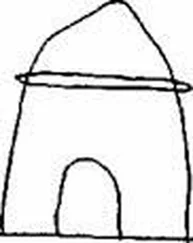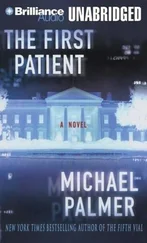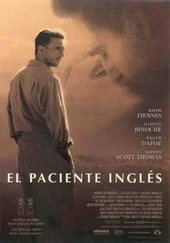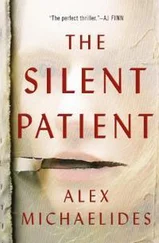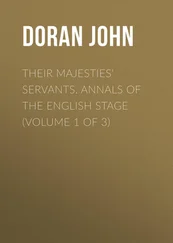Michael Ondaatje - The English Patient
Здесь есть возможность читать онлайн «Michael Ondaatje - The English Patient» весь текст электронной книги совершенно бесплатно (целиком полную версию без сокращений). В некоторых случаях можно слушать аудио, скачать через торрент в формате fb2 и присутствует краткое содержание. Жанр: Старинная литература, на русском языке. Описание произведения, (предисловие) а так же отзывы посетителей доступны на портале библиотеки ЛибКат.
- Название:The English Patient
- Автор:
- Жанр:
- Год:неизвестен
- ISBN:нет данных
- Рейтинг книги:4 / 5. Голосов: 1
-
Избранное:Добавить в избранное
- Отзывы:
-
Ваша оценка:
- 80
- 1
- 2
- 3
- 4
- 5
The English Patient: краткое содержание, описание и аннотация
Предлагаем к чтению аннотацию, описание, краткое содержание или предисловие (зависит от того, что написал сам автор книги «The English Patient»). Если вы не нашли необходимую информацию о книге — напишите в комментариях, мы постараемся отыскать её.
The English Patient — читать онлайн бесплатно полную книгу (весь текст) целиком
Ниже представлен текст книги, разбитый по страницам. Система сохранения места последней прочитанной страницы, позволяет с удобством читать онлайн бесплатно книгу «The English Patient», без необходимости каждый раз заново искать на чём Вы остановились. Поставьте закладку, и сможете в любой момент перейти на страницу, на которой закончили чтение.
Интервал:
Закладка:
Every other week there is a lecture. Someone will introduce the talk and someone will give thanks. The concluding speaker usually argues or tests the lecture for hard currency, is pertinently critical but never impertinent. The main speakers, everyone assumes, stay close to the facts, and even obsessive assumptions are presented modestly.
My journey through the Libyan Desert from Sokum on the Mediterranean to El Obeid in the Sudan was made over one of the few tracks of the earth’s surface which present a number and variety of interesting geographical problems.…
The years of preparation and research and fund-raising are never mentioned in these oak rooms. The previous week’s lecturer recorded the loss of thirty people in ice in Antarctica. Similar losses in extreme heat or windstorm are announced with minimal eulogy. All human and financial behaviour lies on the far side of the issue being discussed—which is the earth’s surface and its “interesting geographical problems.”
Can other depressions in this region, besides the much-discussed Wadi Rayan, be considered possible of utilization in connection with irrigation or drainage of the Nile Delta? Are the artesian water supplies of the oases gradually diminishing? Where shall we look for the mysterious “Zerzura”? Are there any other “lost” oases remaining to be discovered? Where are the tortoise marshes of Ptolemy?
John Bell, director of Desert Surveys in Egypt, asked these questions in 1927. By the 1930s the papers grew even more modest. “I should like to adda few remarks on some of the points raised in the interesting discussion on the ‘Prehistoric Geography of Kharga Oasis.’ ” By the mid-1930s the lost oasis of Zerzura was found by Ladislaus de Almásy and his companions.
In 1939 the great decade of Libyan Desert expeditions came to an end, and this vast and silent pocket of the earth became one of the theatres of war.
In the arboured bedroom the burned patient views great distances. The way that dead knight in Ravenna, whose marble body seems alive, almost liquid, has his head raised upon a stone pillow, so it can gaze beyond his feet into vista. Farther than the desired rain of Africa. Towards all their lives in Cairo. Their works and days.
Hana sits by his bed, and she travels like a squire beside him during these journeys.
In 1930 we had begun mapping the greater part of the Gilf Kebir Plateau, looking for the lost oasis that was called Zerzura. The City of Acacias.
We were desert Europeans. John Bell had sighted the Gilf in 1917. Then Kemal el Din. Then Bagnold, who found his way south into the Sand Sea. Madox, Walpole of Desert Surveys, His Excellency Wasfi Bey, Casparius the photographer, Dr. Kadar the geologist and Bermann. And the Gilf Kebir—that large plateau resting in the Libyan Desert, the size of Switzerland, as Madox liked to say—was our heart, its escarpments precipitous to the east and west, the plateau sloping gradually to the north. It rose out of the desert four hundred miles west of the Nile.
For the early Egyptians there was supposedly no water west of the oasis towns. The world ended out there. The interior was waterless. But in the emptiness of deserts you are always surrounded by lost history. Tebu and Senussi tribes had roamed there possessing wells that they guarded with great secrecy. There were rumours of fertile lands that nestled within the desert’s interior. Arab writers in the thirteenth century spoke of Zerzura. “The Oasis of Little Birds.” “The City of Acacias.” In The Book of Hidden Treasures , the Kitah al Kanuz , Zerzura is depicted as a white city, “white as a dove.”
Look at a map of the Libyan Desert and you will see names. Kemal el Din in 1925, who, almost solitary, carried out the first great modern expedition. Bagnold 1930–1932. Almásy-Madox 1931–1937. Just north of the Tropic of Cancer.
We were a small clutch of a nation between the wars, mapping and re-exploring. We gathered at Dakhla and Kufra as if they were bars or cafés. An oasis society, Bagnold called it. We knew each other’s intimacies, each other’s skills and weaknesses. We forgave Bagnold everything for the way he wrote about dunes. “ The grooves and the corrugated sand resemble the hollow of the roof of a dogs mouth.” That was the real Bagnold, a man who would put his inquiring hand into the jaws of a dog.
1930. Our first journey, moving south from Jaghbub into the desert among the preserve of Zwaya and Majabra’s tribes. A seven-day journey to El Taj. Madox and Bermann, four others. Some camels a horse and a dog. As we left they told us the old joke. “To start a journey in a sandstorm is good luck.”
We camped the first night twenty miles south. The next morning we woke and came out of our tents at five. Too cold to sleep. We stepped towards the fires and sat in their light in the larger darkness. Above us were the last stars. There would be no sunrise for another two hours. We passed around hot glasses of tea. The camels were being fed, half asleep, chewing the dates along with the date stones. We ate breakfast and then drank three more glasses of tea.
Hours later we were in the sandstorm that hit us out of clear morning, coming from nowhere. The breeze that had been refreshing had gradually strengthened. Eventually we looked down, and the surface of the desert was changed. Pass me the book … here. This is Hassanein Bey’s wonderful account of such storms—
“It is as though the surface were underlaid with steam-pipes, with thousands of orifices through which tiny jets of steam are puffing out. The sand leaps in little spurts and whirls. Inch by inch the disturbance rises as the wind increases its force. It seems as though the whole surface of the desert were rising in obedience to some upthrusting force beneath. Larger pebbles strike against the shins, the knees, the thighs. The sand-grains climb the body till it strikes the face and goes over the head. The sky is shut out, all but the nearest objects fade from view, the universe is filled.”
We had to keep moving. If you pause sand builds up as it would around anything stationary, and locks you in. You are lost forever. A sandstorm can last five hours. Even when we were in trucks in later years we would have to keep driving with no vision. The worst terrors came at night. Once, north of Kufra, we were hit by a storm in the darkness. Three a. m. The gale swept the tents from their moorings and we rolled with them, taking in sand like a sinking boat takes in water, weighed down, suffocating, till we were cut free by a camel driver.
We travelled through three storms during nine days. We missed small desert towns where we expected to locate more supplies. The horse vanished. Three of the camels died. For the last two days there was no food, only tea. The last link with any other world was the clink of the fire-black tea urn and the long spoon and the glass which came towards us in the darkness of the mornings. After the third night we gave up talking. All that mattered was the fire and the minimal brown liquid.
Only by luck did we stumble on the desert town of El Taj. I walked through the souk, the alley of clocks chiming, into the street of barometers, past the rifle-cartridge stalls, stands of Italian tomato sauce and other tinned food from Benghazi, calico from Egypt, ostrich-tail decorations, street dentists, book merchants. We were still mute, each of us dispersing along our own paths. We received this new world slowly, as if coming out of a drowning. In the central square of El Taj we sat and ate lamb, rice, badawi cakes, and drank milk with almond pulp beaten into it. All this after the long wait for three ceremonial glasses of tea flavoured with amber and mint.
Sometime in 1931 I joined a Bedouin caravan and was told there was another one of us there. Fenelon-Barnes, it turned out. I went to his tent. He was out for the day on some small expedition, cataloguing fossil trees. I looked around his tent, the sheaf of maps, the photos he always carried of his family, et cetera. As I was leaving I saw a mirror tacked up high against the skin wall, and looking at it I saw the reflection of the bed. There seemed to be a small lump, a dog possibly, under the covers. I pulled back the djellaba and there was a small Arab girl tied up, sleeping there.
Читать дальшеИнтервал:
Закладка:
Похожие книги на «The English Patient»
Представляем Вашему вниманию похожие книги на «The English Patient» списком для выбора. Мы отобрали схожую по названию и смыслу литературу в надежде предоставить читателям больше вариантов отыскать новые, интересные, ещё непрочитанные произведения.
Обсуждение, отзывы о книге «The English Patient» и просто собственные мнения читателей. Оставьте ваши комментарии, напишите, что Вы думаете о произведении, его смысле или главных героях. Укажите что конкретно понравилось, а что нет, и почему Вы так считаете.


